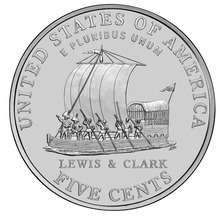Setting pole

A setting pole is a pole, handled by a single individual, made to move boats by pushing the craft in the desired direction. Because it is a pushing tool, it is generally used from the stern (back) of the craft.
A setting pole is usually made of ash, or a similar resilient wood, and is capped on one or both ends with metal to withstand the repeated pushing against the bottom and rocks, and to help the end of the pole sink to the bottom more quickly. It can range in length from eight feet (2.5 metres), to over eighteen feet (5.5 metres).[1]
Setting poles were used widely on the rivers of the 18th and 19th century American West to propel keelboats.[2] The 1804 Lewis and Clark expedition relied on setting poles to propel their barge on the Missouri River. They brought six purpose-built setting poles, each eighteen feet long and capped with iron on the bottom, though they ended up losing some and replacing them with dog-travois poles taken from an abandoned Native American camp.[1]
Setting poles are also used widely on the Mesopotamian Marshes to propel the mashoof canoes used by the Marsh Arabs. These poles are called marda (مُرْدِيّ in Literary Arabic) and are 10-13 feet (3-4 meters) long and made from wood and sturdy reeds.[3]

The best known form of setting pole is the single-ended punt pole used in Oxford and Cambridge. A setting pole may also be used in river canoeing for navigating portions of river where the water is too shallow for a paddle to create thrust, or where the desired direction of travel is opposite a current moving fast enough to make paddling inefficient. Setting poles are also useful for fending off drifting logs and negotiating sandbars, shoals, and rocks.[1]
See also
References
- 1 2 3 Mussulman, Joseph (April 2014). "Flagship: Keelboat, Barge or Boat?". Discovering Lewis & Clark. Retrieved 19 June 2018.
- ↑ Riley, Franklin Lafayette (1903). Publications of the Mississippi Historical Society. VII. Oxford, Mississippi: Mississippi Historical Society. p. 482.
- ↑ Kubba, Sam (2011). The Iraqi Marshlands and the Marsh Arabs: The Ma'dan, Their Culture and the Environment. Trans Pacific Press. p. 69. ISBN 9780863723339.